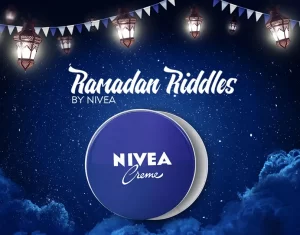If you’re reading this, you already know that linking is an important part of both on- and off-page Search Engine Optimization (SEO).
With that in mind, we’ve put together the ultimate guide on how to link — while following our own advice and including a plethora of links to our previous posts about linking to boot! So meta.
Key Takeaways
- Linking is a critical component of effective SEO strategy.
- Links are the foundation of the World Wide Web. Each link to a page is a vote for that page.
- Use anchor text that describes the page you’re linking to (i.e. keywords or keyphrases) instead of generic text like “click here.”
- Internal linking to your own relevant content is a way to vote for yourself and strengthen your SEO.
- Deciding what to link to internally is determined by your site structure. Keep everything you want to rank for no more than two links from your homepage.
- Google likes external links, too. Just be sure the link is reputable and trusted and use more internal links than external.
- Backlinks, while harder to get, are also helpful in building your PageRank authority.
What Are Links?
Links, or hyperlinks, are typically the blue, underlined words on a page (although themes can and typically do adjust the color with CSS) or anything that appears between <a> and </a> tags in the HTML.
They’re how users navigate from page to page, making them part of the literal foundation of the World Wide Web.
Why Are Links So Important?
One word: PageRank.
There’s a reason we all Google things today and don’t AltaVista them. The original PageRank algorithm that differentiated the Google search engine from its competitors still reigns supreme today.
Google realized that on-page signals like keywords alone won’t tell you everything about a page and needed to follow the hyperlinks as well.
While the PageRank algorithm has become a smaller ranking signal over time as Google continues to develop more intelligent link analysis, at its core the message is the same:
Google analyzes websites on a per page level, not just the domain. A link to a page is a vote for that page, and yes, you can vote for yourself.
But first, let’s look at how to link.
Anchor Text
While the pages that link to you and what you link to will always be most impactful on rankings, HOW you link is also a key factor.
You should always link with plain text words whenever possible instead of linking on images. And not just on any text but on the right text.
Be sure the anchor text inside the opening and closing tags are the keywords or keyphrase describing the page you’re linking to.
For example, if you link to this guide — and please do if you find it useful! — we’d love for you to link to it on anchor text such as “SEO linking guide” rather than something like “click here.”
Internal Links
As we mentioned above, every link from your website to another is like a vote for that page to rank. Everyone who links to you is voting for you.
But what’s really cool? Like any democracy, you can vote for yourself. Even better than democracy (well, for SEO purposes at least)? You can vote for yourself more than once — and you should.
As they say, vote early and vote often.
To that end, internal links (links within your own website) are incredibly important. As a general guide, you should load up your pages and posts with as many internal links as you can organically.
If you can get every paragraph or two to feature a link to yourself, that’s actually a good thing — as long as your anchor text naturally fits within that sentence and the anchor text you’re linking on describes the page you’re linking to. That’s what we mean by organically.
As you get good at this and start thinking about SEO as you write, you’ll subconsciously find yourself creating more link opportunities.
What should you link to? Well, glad you asked! Segue alert…
Site Structure
As great as just linking to whatever organically fits into a sentence is, you should also be thinking of an overall site structure strategy.
You should be able to divide the content on your website into categories, or silos. Let’s say you run a corporate blog that talks about all sorts of things — ad management, publishing advice, SEO and so much more.
Within the SEO section, which becomes one silo, you ideally link to other SEO content. And as you add more content to that SEO silo, you will break the main category down into subcategories.
You may end up with a subcategory for links and one for keywords. Within each of those subcategories, make sure you’re linking to other content in that subcategory, and back up to the main category itself.
Each category can also become its own cornerstone content, which offers you a great chance to rank for content on its own.
This strategy is the key to helping you not only organize your link equity, but also to create additional ranking opportunities.
Also important with regard to site structure is remembering the fact that your homepage is your most valuable page — it has the most links to it.
For this reason, your end goal should be to keep what you want to rank on no further than two links, or hops, away from the homepage.
Complex? You bet, but that’s why we have a blog post dedicated entirely to site structure to walk you through it.
Still with us? Great. Now that you’ve mastered internal linking, let’s head to the other side of the coin.
External Links
Voting for yourself is incredibly important, but what a lot of publishers don’t realize is that voting for others is a good thing as well!
It may seem counterintuitive to help other sites rank better, but you’ll also be helping yourself in the process. How?
Links aren’t just votes in a popularity contest, with winners and losers; they’re about recognizing who’s an authority on a subject.
Think of external links as sources you would cite in a book report. By linking to something, you’re saying that you did your research, sourced your information and can be trusted as a result.
Google encourages you to link externally, but choose the recipients of your outbound links wisely. You are judged based on these links, so before effectively endorsing someone, be sure they deserve it.
As for how often should you externally link? Ideally, you’ll include at least one per blog post. At the same time, include significantly more internal links than external links so you won’t lose PageRank.
As important as linking to others may be, guess what is still likely the most important factor in your ability to rank?
Backlinks
This one is a little easier said than done, but external links, or , pointed to you is the best way to build PageRank.
By definition, you’ll have less control over backlinks than internal links, so don’t stress as much about things like anchor text.
It’s ideal if others deep link, or link directly to the most relevant page, but if they link to your homepage — still good.
Take what you can get. A link is a link. Google recognizes that this is something you can’t control, so take it however you can, even if it’s through allowing other websites to syndicate your content.
Yes, this is a super controversial opinion in the blogging community, but hear us out: Sometimes those people scraping your site or “stealing” your content aren’t evil as you think, as long as they link to you.
For more on backlinks, take a look at this great post on the art of giving and receiving backlinks by Joshua Unseth on our blog.
As I always say, publishers don’t need to be computer experts or technical wizards to SEO Like A CEO. (This is actually the first time I’ve said that, but maybe it’ll stick, who knows.)
But seriously. These basic principles and best practices do become second nature with time. If you regularly write quality content and commit to optimizing it for SEO, you’ll be a pro before you know it.
If you’re looking for more SEO content, check out the Mediavine SEO Like A CEO series on our blog and on our YouTube channel.
The post SEO Guide: Linking appeared first on Mediavine.
This content was originally published here.




